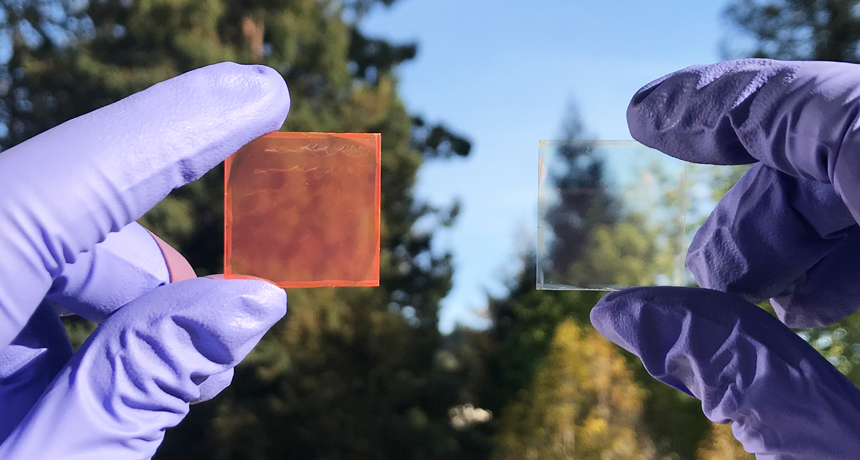Smart windows could block brightness and harness light
New material pulls double-duty as shade and perovskite solar cell

SOAKIN’ UP SUN New materials can switch from transparent pane (right) to dark-tinted solar cell (left) and back again.
Jia Lin/U.C. Berkeley